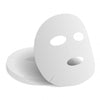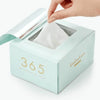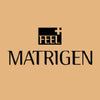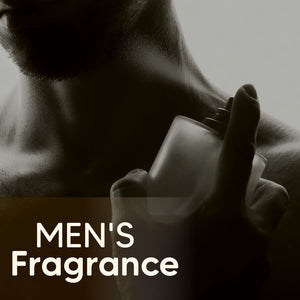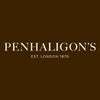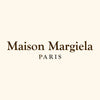Sunscreen Showdown: Mineral vs Chemical — What's Better for Oily, Acne-Prone Skin in Hot Weather?
You're standing in front of your bathroom mirror at 7 AM, already feeling the heat seeping through your window. You reach for your sunscreen, and then you pause. That familiar hesitation. Will this be the day your sunscreen betrays you? Will you spend your afternoon blotting oil, feeling uncomfortable grease sliding down your temples, checking your reflection for new breakouts?
For those of us with oily, acne-prone skin in hot, humid climates, sunscreen isn't just another skincare step. It's a daily negotiation between protection and peace of mind. Choosing the wrong sunscreen can feel like self-sabotage. But choosing the right one? That's where everything changes.
Table of Contents
- 1. Understanding the Two Sunscreen Types: Science Made Simple
- 1.1. What is Mineral Sunscreen?
- 1.2. What is Chemical Sunscreen?
- 1.3. Mineral vs Chemical Sunscreen: Head-to-Head Comparison Table
- 2. Mineral vs Chemical Sunscreen for Acne-Prone Skin: The Verdict
- 2.1. Why Acne-Prone Skin Needs Special Attention
- 2.2. Mineral Sunscreen for Acne-Prone Skin
- 2.3. Chemical Sunscreen for Acne-Prone Skin
- 2.4. The Hybrid Solution: Best of Both Worlds?
- 3. Hot Weather Climate Factor: Heat, Humidity & Your Sunscreen Choice
- 3.1. How Tropical Weather Affects Sunscreen Performance
- 3.2. Mineral Sunscreen in Hot Climate
- 3.3. Chemical Sunscreen in Hot Climate
- 3.4. Expert Recommendations for Hot Weather & Acne-Prone Skin
- 4. Complete Buying Guide: How to Choose Your Perfect Sunscreen
- 4.1. 7-Step Selection Framework
- 4.2. Ingredient Red Flags for Acne-Prone Skin
- 4.3. Must-Have Ingredients for Oily, Acne-Prone Skin
- 4.4. Texture Guide: Finding Your Formula Type
- 5. Top Product Recommendations by Category
- 5.1. Best Mineral Sunscreens for Acne-Prone Skin in Hot Weather
- 5.2. Best Chemical Sunscreens for Acne-Prone Skin in Hot Weather
- 5.3. Best Hybrid Sunscreens: Combination Formulas
- 5.4. Local vs International Brands: Availability and Authenticity
- 6. Application Mastery: Getting the Most from Your Sunscreen
- 6.1. The Right Amount: Why Most People Fail Here
- 6.2. Layering Sunscreen with Acne Treatments
- 6.3. Reapplication Strategy in Hot Weather
- 6.4. Night Routine: Removing Sunscreen Completely
- 7. Real Stories: Before and After Experiences
- 7.1. Case Study 1: From Chemical to Mineral Success
- 7.2. Case Study 2: Finding the Right Chemical Formula
- 7.3. Case Study 3: Hybrid Solution for Moderate Acne
- 8. Common Myths Debunked
- 9. Expert Q&A: Your Burning Questions Answered
- 9.1. 1 Can sunscreen alone clear acne?
- 9.2. 2 Should I skip sunscreen during breakouts?
- 9.3. 3 Which ages better, mineral or chemical sunscreen?
- 9.4. 4 How do I deal with sunscreen pilling?
- 9.5. 5 Is SPF in makeup enough protection?
- 9.6. 6 Can I use body sunscreen on my face?
- 10. Making Your Decision: Personalized Selection Chart
- 11. Conclusion: Your Skin, Your Choice, But Now You're Empowered
1. Understanding the Two Sunscreen Types: Science Made Simple

1.1. What is Mineral Sunscreen?
Mineral sunscreens work like tiny shields, with zinc oxide or titanium dioxide sitting on top of your skin, bouncing UV rays away before they can penetrate. The moment you apply them, they're working. These minerals physically reflect or scatter UV rays away from the skin's surface, providing immediate protection against both UVA and UVB radiation.
1.2. What is Chemical Sunscreen?
Chemical sunscreens are more like secret agents. They slip beneath your skin's surface, where organic compounds like avobenzone and oxybenzone absorb UV radiation and transform it into heat. They're invisible, elegant, absorbed into your skin, converting harmful rays before you even know they were there. It's chemistry, happening on your face, all day long.
1.3. Mineral vs Chemical Sunscreen: Head-to-Head Comparison Table
Protection Mechanism: Mineral reflects/scatters UV rays physically, while a chemical absorbs and converts UV to heat. Texture & Finish: Mineral tends toward a thicker texture, potentially leaving a white cast; chemical is typically lightweight and invisible. Application Time: Mineral works immediately; chemical requires 15-20 minutes to activate. Ingredient Sensitivity: Minerals are generally less irritating; chemicals can cause reactions in some individuals. Environmental Impact: Mineral (zinc/titanium) reef-safe; some chemical filters are harmful to marine life. Price Range: Both are available across all price points.
2. Mineral vs Chemical Sunscreen for Acne-Prone Skin: The Verdict
2.1. Why Acne-Prone Skin Needs Special Attention
Your pores are already working overtime, producing more sebum than they should. When excess sebum gets trapped in pores along with dead skin cells, it creates an ideal breeding ground for inflammation and breakouts. Now imagine adding the wrong sunscreen into this delicate ecosystem. Your sunscreen might be protecting you from UV rays while simultaneously creating the next wave of acne.
2.2. Mineral Sunscreen for Acne-Prone Skin
Zinc oxide has anti-inflammatory and antibacterial properties that can help soothe acne-related redness and irritation. It's not just protecting you from the sun, it's actively calming your skin down. But mineral sunscreens can feel heavy, especially in humidity. That white cast can oxidize, turn gray, pill up when you sweat. Mineral sunscreens often have a thicker texture, which can make them feel heavier on your skin, particularly challenging in hot weather.
2.3. Chemical Sunscreen for Acne-Prone Skin
Chemical sunscreens seduce us with their texture. They're lightweight, they sink in, they disappear. For oily skin in hot weather, this sounds like a dream. But chemical formulas can be trickier for sensitive, acne-prone skin. Some chemical sunscreen ingredients can cause irritation and may contribute to clogged pores and breakouts. The ingredient list matters more than the label. A chemical sunscreen with comedogenic oils will betray you, but a well-formulated one, free of pore-clogging ingredients, might be exactly what your skin needs.
2.4. The Hybrid Solution: Best of Both Worlds?
Some modern formulations combine mineral and chemical filters, capturing the benefits of both while minimizing drawbacks. These hybrid sunscreens offer the lightweight feel of chemical filters with the gentle, anti-inflammatory properties of zinc oxide. For those who've had mixed results with both, hybrid formulas represent a compelling middle ground.
3. Hot Weather Climate Factor: Heat, Humidity & Your Sunscreen Choice
3.1. How Tropical Weather Affects Sunscreen Performance
Research shows that Sun Protection Factors are often approximately 50% to 80% of their labeled value under real-world conditions, and many individuals use less than half the recommended amount. Translation: That SPF 50 you applied might be performing like an SPF 25. Hot, humid weather doesn't just make sunscreen uncomfortable, it actively challenges its performance.
3.2. Mineral Sunscreen in Hot Climate
Mineral sunscreens can sometimes withstand sweat better since they sit on top of your skin. But in extreme humidity, they can feel suffocating. The white cast becomes more pronounced when you sweat, and the thick texture can trap heat and sebum against your skin. Mineral formulas need mattifying agents and lightweight bases to perform comfortably in hot conditions.
3.3. Chemical Sunscreen in Hot Climate
Chemical sunscreens promise lightweight wear, but sweat and sebum can break down their protective film faster. Lightweight gel-based chemical sunscreens are often recommended for hot weather because they feel less heavy. However, they can degrade more quickly with perspiration. The solution lies in formulas specifically engineered for high-sweat conditions with enhanced water resistance.
3.4. Expert Recommendations for Hot Weather & Acne-Prone Skin
Look for "water-resistant," "sweat-resistant," and "long-wearing" formulas. Seek mattifying finishes, oil-control ingredients like niacinamide, and gel or fluid textures. The ideal hot-weather sunscreen for acne-prone skin should feel almost weightless, control shine throughout the day, and maintain its protective capability even when you're perspiring.
4. Complete Buying Guide: How to Choose Your Perfect Sunscreen
4.1. 7-Step Selection Framework
First, identify your specific concerns: acne severity and oiliness level. Second, check for non-comedogenic certification. Third, read the ingredient list carefully. Fourth, consider the finish: matte, dewy, or natural. Fifth, evaluate SPF and PA ratings (SPF 50+ is ideal). Sixth, test for white cast and pilling if possible. Seventh, factor in your budget and where you can purchase authentic products.
4.2. Ingredient Red Flags for Acne-Prone Skin
Avoid coconut oil, cocoa butter, and isopropyl myristate, these are highly comedogenic. Watch out for certain silicones in high concentrations. Be cautious with denatured alcohol, which can strip your skin and trigger more oil production. Fragrance and essential oils can irritate acne-prone skin. Over 80% of cosmetic products contain pore-clogging ingredients. You need to become a vigilant label reader.
4.3. Must-Have Ingredients for Oily, Acne-Prone Skin
Seek niacinamide for oil control and pore minimizing. Green tea extract offers antioxidant and anti-inflammatory properties. Salicylic acid provides double duty protection and treatment. Centella asiatica soothes inflamed skin. Zinc oxide and titanium dioxide are less likely to cause irritation, making them valuable for sensitive, acne-prone skin.
4.4. Texture Guide: Finding Your Formula Type
Gel sunscreens are ultra-lightweight champions, perfect for very oily skin and hot weather. Fluid or lotion textures offer balanced middle ground. Cream sunscreens must be oil-free and mattifying to work for oily skin. Stick sunscreens provide portable reapplication solutions. The texture you choose can make or break your daily compliance.
5. Top Product Recommendations by Category
5.1. Best Mineral Sunscreens for Acne-Prone Skin in Hot Weather
SkinCeuticals Physical Fusion UV Defense SPF 50 represents refined mineral protection. This tinted formula blends into multiple skin tones while providing mineral barrier protection. The zinc oxide and titanium dioxide combination gives broad-spectrum coverage, while the universal tint neutralizes white cast. For acne-prone skin, zinc's anti-inflammatory properties offer dual benefits. In hot weather, the mattifying finish helps control shine. The premium price point reflects sophisticated formulation that delivers reliable mineral protection without the typical heavy feel.
5.2. Best Chemical Sunscreens for Acne-Prone Skin in Hot Weather
Look for ultra-light gel formulations with newer-generation filters like Tinosorb or Uvinul A Plus, which offer better photostability and less irritation. Korean and Japanese formulations excel in humid climates. Budget options include Biore UV Aqua Rich Watery Essence and Canmake Mermaid Skin Gel. Mid-range favorites feature La Roche-Posay Anthelios Ultra-Light Fluid and Supergoop Unseen Sunscreen. Premium options like Shiseido Urban Environment offer luxury textures with serious performance.
5.3. Best Hybrid Sunscreens: Combination Formulas
La Prairie Cellular Swiss UV Protection Veil SPF50+ PA++++ combines mineral filters with cutting-edge skincare technology. The formula feels weightless despite high protection, and the PA++++ rating provides the highest level of UVA protection. It's formulated to work in humidity, resisting breakdown when sweat meets sunscreen. The cellular components enhance your skin's natural defense mechanisms. This is luxury meeting function, where sun protection becomes an extension of treatment.
5.4. Local vs International Brands: Availability and Authenticity
Purchase from authorized retailers, dermatologist offices, or official brand websites. International brands like SkinCeuticals, La Prairie, and La Roche-Posay are available through luxury skincare retailers and medical spas. Asian beauty brands can be found through reputable K-beauty or J-beauty retailers. Always check for proper packaging, batch codes, and expiration dates. If the price seems too good to be true, it probably is.
6. Application Mastery: Getting the Most from Your Sunscreen
6.1. The Right Amount: Why Most People Fail Here
The two-finger rule: squeeze sunscreen along your index and middle finger, from base to tip. That's approximately what you need for face and neck. Most people use half that. Many individuals use less than half the recommended amount, significantly reducing effectiveness. Underapplying SPF 50 with only half the amount gives you SPF 7 protection.
6.2. Layering Sunscreen with Acne Treatments
Apply acne treatments first after cleansing. Let them absorb completely, five to ten minutes if possible. Your retinoids, salicylic acid, benzoyl peroxide need direct contact with skin. Then comes lightweight moisturizer if needed, followed by sunscreen as the final step before makeup. Don't mix products together. Each product needs its moment to work effectively.
6.3. Reapplication Strategy in Hot Weather
Reapplication becomes an art form in hot weather. Blotting papers remove excess oil before reapplying. Powder sunscreens exist for touch-ups over makeup. Sunscreen sticks let you reapply to high-exposure areas without disturbing your full face. Setting sprays with SPF offer another layer, though they shouldn't replace proper application. Find your system, make it work for your life.
6.4. Night Routine: Removing Sunscreen Completely
Double cleanse always. Oil cleanser first to break down sunscreen, makeup, and excess sebum. Massage thoroughly for sixty seconds, then emulsify with water. Follow with your regular water-based cleanser. Proper removal through double cleansing is essential for preventing sunscreen-related breakouts. This ensures your pores are clear and nighttime treatments can penetrate effectively.
7. Real Stories: Before and After Experiences
7.1. Case Study 1: From Chemical to Mineral Success
Sarah spent two years cycling through chemical sunscreens. They felt amazing going on, but three weeks into any formula, breakouts would start. When she tried a modern tinted mineral formula, everything changed. The first week felt heavy, but by week three, her skin was calmer than it had been in years. The anti-inflammatory properties of zinc oxide were exactly what her reactive skin needed.
7.2. Case Study 2: Finding the Right Chemical Formula
James found mineral sunscreens made his skin worse. The thickness trapped sweat and oil. He discovered gel-based chemical sunscreens from Japanese brands, formulated for humid climates and oily skin. The lightweight texture, instant absorption, and matte finish transformed his experience. The lesson: your skin's response matters more than general recommendations.
7.3. Case Study 3: Hybrid Solution for Moderate Acne
Maria had moderate acne in a tropical climate. Pure mineral felt too heavy but calmed her breakouts. Pure chemical felt perfect texturally but caused new breakouts. A hybrid formula gave her both: soothing zinc oxide for inflamed acne, combined with modern chemical filters for lightweight feel. She also learned to switch formulas seasonally for optimal results.
8. Common Myths Debunked
"Higher SPF means heavier texture." Not anymore. You can find SPF 50+ in gel textures that feel like water. "Mineral is always better for acne." Not if the formula contains comedogenic bases or feels so heavy you skip protection. What matters is whether the sunscreen contains pore-clogging ingredients, not the type. "Chemical sunscreen causes cancer." Studies show some absorption, but both the American Academy of Dermatology and FDA agree sun protection is critical. The proven cancer risk from UV exposure vastly outweighs theoretical concerns. "Expensive means better." Price reflects packaging and marketing. Read ingredients, understand your skin, test carefully.
9. Expert Q&A: Your Burning Questions Answered
9.1. 1 Can sunscreen alone clear acne?
No, sunscreen alone cannot clear acne, but it helps prevent post-inflammatory hyperpigmentation from worsening and protects the skin while you use acne treatments.
9.2. 2 Should I skip sunscreen during breakouts?
Never. UV exposure makes inflammation worse and can cause darker, longer-lasting marks, so sunscreen is still essential during breakouts.
9.3. 3 Which ages better, mineral or chemical sunscreen?
Both mineral and chemical sunscreens help prevent photoaging equally well when used correctly and reapplied as directed.
9.4. 4 How do I deal with sunscreen pilling?
To reduce pilling, wait longer between skincare layers, use a lighter amount of moisturizer, avoid heavy layering, or switch to a different sunscreen formula.
9.5. 5 Is SPF in makeup enough protection?
No. SPF in makeup alone is not enough because you would need multiple thick layers to reach the labeled SPF. Always use a dedicated sunscreen underneath makeup.
9.6. 6 Can I use body sunscreen on my face?
It’s not recommended. Body sunscreens are usually heavier, more occlusive, and more likely to be comedogenic, so it’s better to use a sunscreen formulated specifically for the face.
10. Making Your Decision: Personalized Selection Chart
10.1. Interactive Decision Tree
Start here: What's your primary concern? Severe cystic acne and inflammation: lean toward mineral formulas with zinc oxide. Moderate acne with extreme oiliness: consider gel-based chemical or hybrid formulas. Sensitive skin with occasional breakouts: try tinted mineral or newer-generation chemical filters. Does humidity make your skin worse? Choose gel textures and mattifying finishes. Do you wear makeup daily? Look for products that layer well and dry down completely.
10.2. Your Action Plan
Week 1: Patch test behind your ear and jawline. Apply normally, observe for 48 hours. If clear, begin using on half your face. Weeks 2-4: Monitor and adjust. Keep a simple log: How does it feel? Are you breaking out more, less, or the same? Long-term: Consider seasonal adjustments. What works in winter might suffocate you in summer. Have multiple sunscreens for different situations.
11. Conclusion: Your Skin, Your Choice, But Now You're Empowered
The answer? Whichever sunscreen you'll actually wear every single day. The best sunscreen is the one that doesn't make you dread its application, the one that protects without punishing. For some, that's a modern mineral formula like SkinCeuticals Physical Fusion, where protection feels like treatment. For others, a carefully formulated chemical sunscreen, free of pore-cloggers, is invisible enough to reapply. And for some, a hybrid like La Prairie Cellular UV Protection Veil, where filters work together for elegant, effective protection.
Finding the right sunscreen isn't about following rules. It's about listening to your skin and being honest about what you'll actually use. The perfect sunscreen sitting unused offers zero protection. But the good-enough sunscreen you apply every morning, reapply at lunch, and remove properly at night? That's the one changing your skin's future. That's the one that lets you step outside without anxiety, that protects without betraying, that finally lets your skin breathe easy under intense sun. Your skin has been waiting for the day protection feels like care instead of compromise. That day could be today.
*The content displayed on the lmching.com website is provided solely for informational purposes. We sincerely value your visit to our website.
編集メンバー
ブログを担当しているエキスパートたちをご紹介します!










